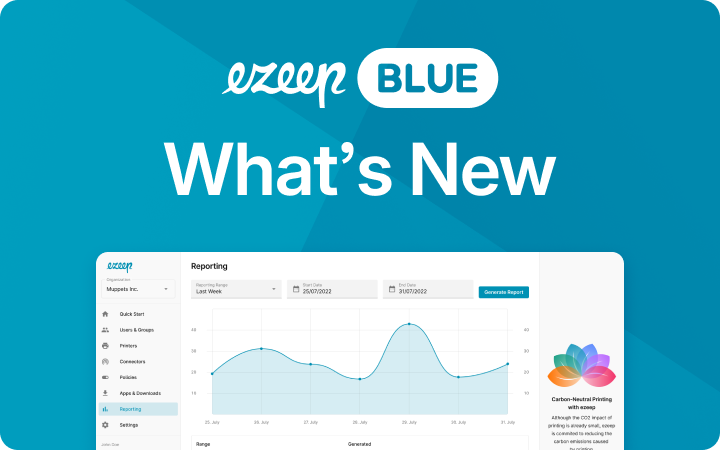Hybrid Work – How the Cloud Is Finally Bridging Home & Office Spaces
Have you already heard of hybrid work or the hybrid workplace? How is it impacting our worklives today and what will it look like in the future?
Early in 2020, many of us landed almost overnight in the world of the home office. Regardless of whether we wanted to or not. Or even if we had the tools at hand to get our jobs done. Despite the suffering the world has faced with COVID-19, one of the positive aspects has been the psychological and productivity benefits associated with the disruption to the 5-day work office routine. A routine and commute that many of us had based our lives around.

Here at our company, we conducted a survey at the onset of the pandemic. This was to see how employees were dealing with home office settings. In a response to one question, nearly 75% wanted a mixture of home and office working for the future.
The Hybrid Workplace – The New Default Model?
Our results (for a tech company with highly-skilled employees) are broadly in line with research such as that carried out by Stanford University’s Institute for Economic Policy Research. Their “How Working from Home Works Out” shows that 20% of employees never want home office. Another 25% want to do it full time. The remaining 55% majority all want some mix of office and home time (see figure 5 in their report). So, understanding employees’ wishes are one thing. Enabling a hybrid work model and designing a hybrid workplace that is flexible enough to deal with the changes facing us in the next 10 to 15 years is another.
Nobody has yet come up with a final definition of hybrid work. However, our common aim should be to enable employees to complete their tasks as smoothly as possible, regardless of their location. The key to this is a simple internet connection and a laptop, something which fortunately most of us have. Had the COVID-19 pandemic hit us 10 years previously, the economic impact would have been far more immense. We would have been faced with two destructive options: Stop work and allow the entire economy to collapse. Or to carry on working, resulting in higher infection rates, overrun hospitals, and more long-term economic pain. Working from home is not only economically essential. It is a critical weapon in our fight against COVID-19 – and future pandemics or other natural or man-made disasters.
The Cloud Toolkit
The key to creating a hybrid workplace is enabling flexibility. The cloud has proven itself in recent years to not only offer the most flexibility. It also delivers up-to-date security features. However, the overriding benefit of the cloud is that it can easily scale to meet the hybrid workplace requirements of today as well as in the future. With virtually all end devices now connected to the internet, and employees being often equipped with company-provided devices or their personal endpoints, the cloud offers us a clear path to enabling hybrid work.
However, we can’t instantly transfer everything to the cloud, printers being a good example. That being said, many third parties have come up with innovative solutions that are both easy to implement and use. In the case of printing, ThinPrint’s ezeep solution moves the entire printing process to the cloud. This ensures that organizations no longer have to bother with drivers, operating systems, and end devices for example. And end-users print just as they expect to. And with 77% of employees having a printer available to them in their home office space, ensuring end-users can print at home is an equally important aspect of a hybrid work strategy.
A Solution for Home Workers
An ideal solution together with ezeep Blue is the use of the ezeep Hub in home offices. It can be sent directly to employees who work from home. As a true plug-and-play solution, an employee only has to plug it in. The ezeep Hub automatically registers itself in the network. An IT employee enters the Mac address, located on the back of the device, in the central cloud management console, and then the ezeep Hub and the connected printer can be fully managed, centrally and remotely. This also enables the implementation of strengthened security guidelines. Access to the local interfaces can be completely blocked via policies, and yet printing remains possible.
In the bigger picture of the hybrid workplace, cloud printing is an ideal example of how to reduce cost and complexity while improving efficiency. Eradicating local print servers, for example, and shifting print management to the cloud means capital expenses become operating costs. When combined with flexible and scalable subscriptions, this results in far lower and more predictable costs. On top of this comes the reduced burden on IT departments. As an example of just how much movement to the cloud has already taken place, Quocirca found in a snapshot of US and UK IT decision-makers that 49% had already deployed cloud print management. Another 36% were planning on doing so.
The Future Impact of the Hybrid Workplace
COVID-19 has been a wakeup call for IT to ensure that systems are up and running for such an event. And the longer-term effects on how we work are already being seen. What is likely for most companies will be a mix of home or remote work. This allows quiet work to be done at home combined with office days for collaborative work. Less stress for commuting employees and an improved climate balance are just some of the other benefits.
When it comes to office space, many companies will be looking to downsize somewhat. Getting rid of some open-plan office space yet keeping meeting rooms and other collaborative areas is key. This allows teams to easily and productively get together and work with enough space. For online collaboration, there are a number of impressive solutions focusing on teamwork such as Teamplace.
Moving IT systems to the cloud will also result in long-term scalability and security improvements for those in IT. End-users too will ultimately benefit from evolving usability improvements. New features and tools will enable productivity among employees to increase in the years ahead. This will contribute to the economic recovery from COVID-19 and also help to future-proof our world against similar events.
